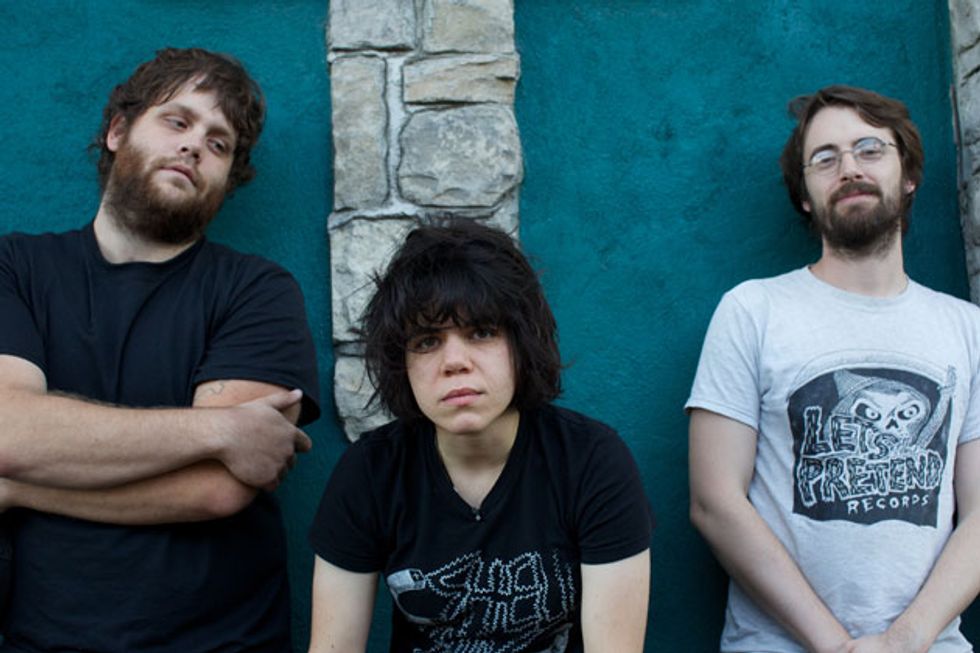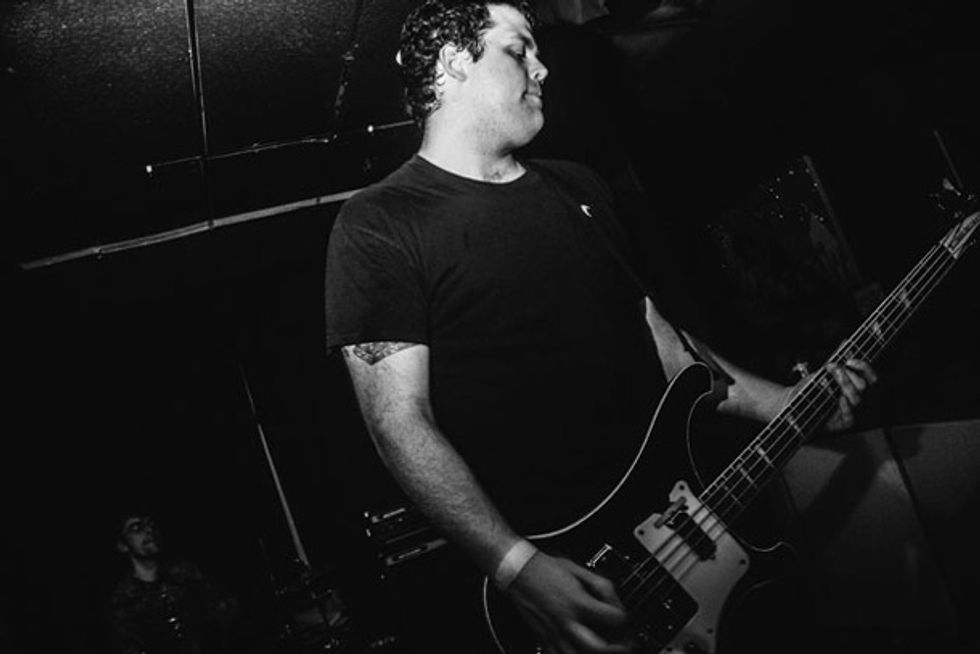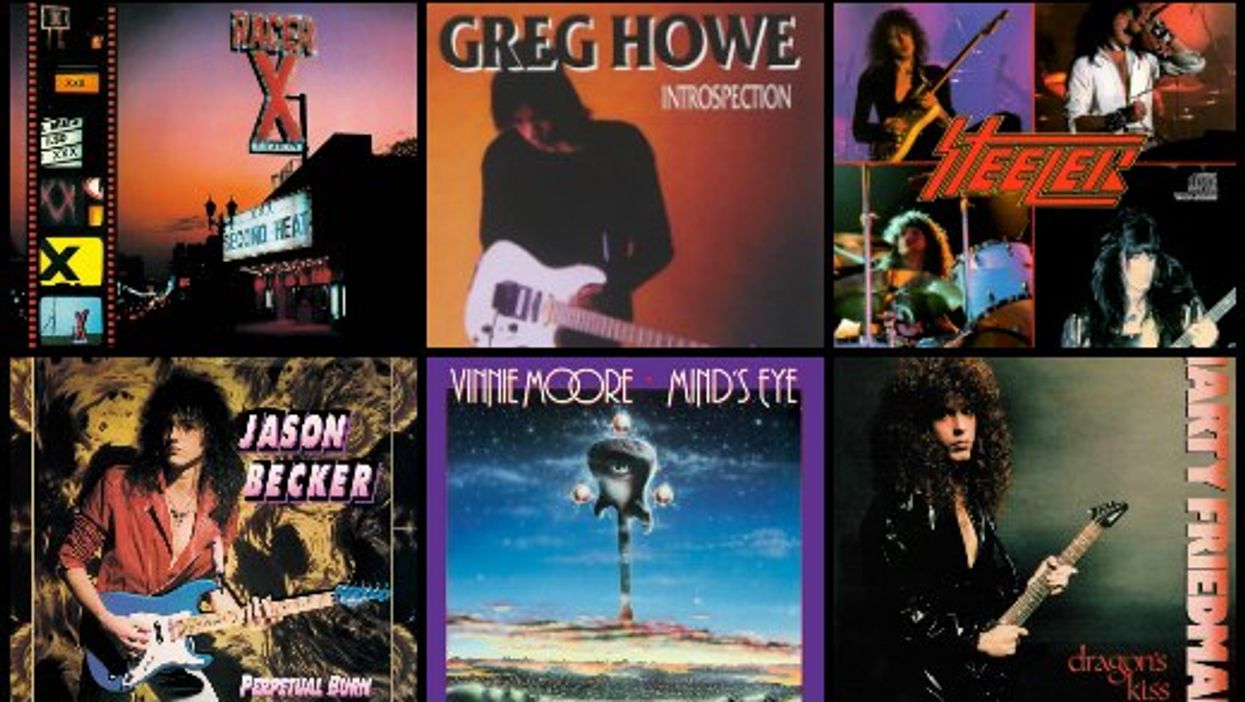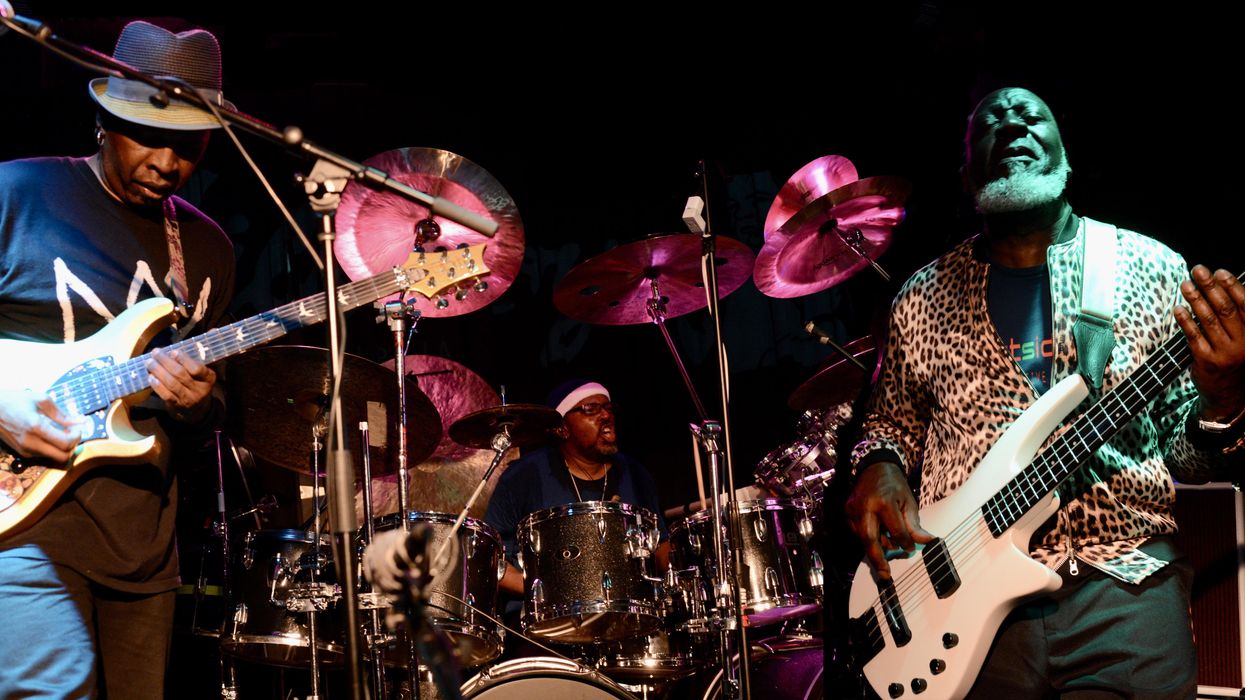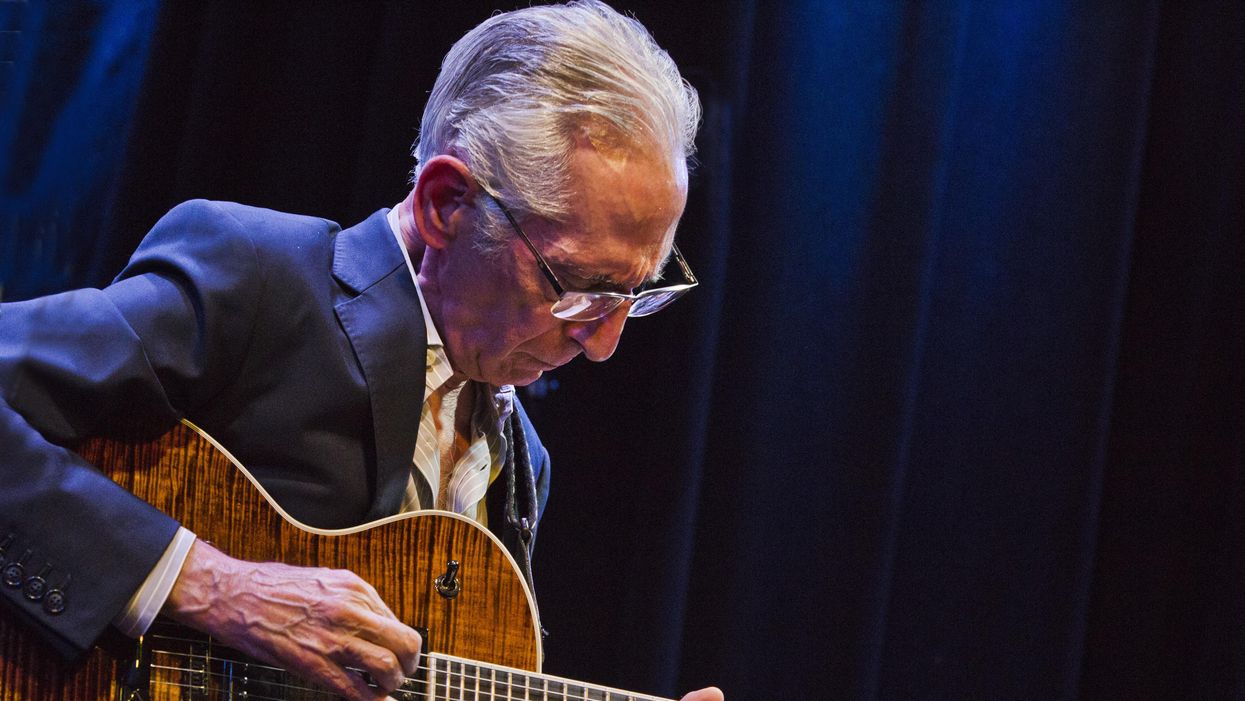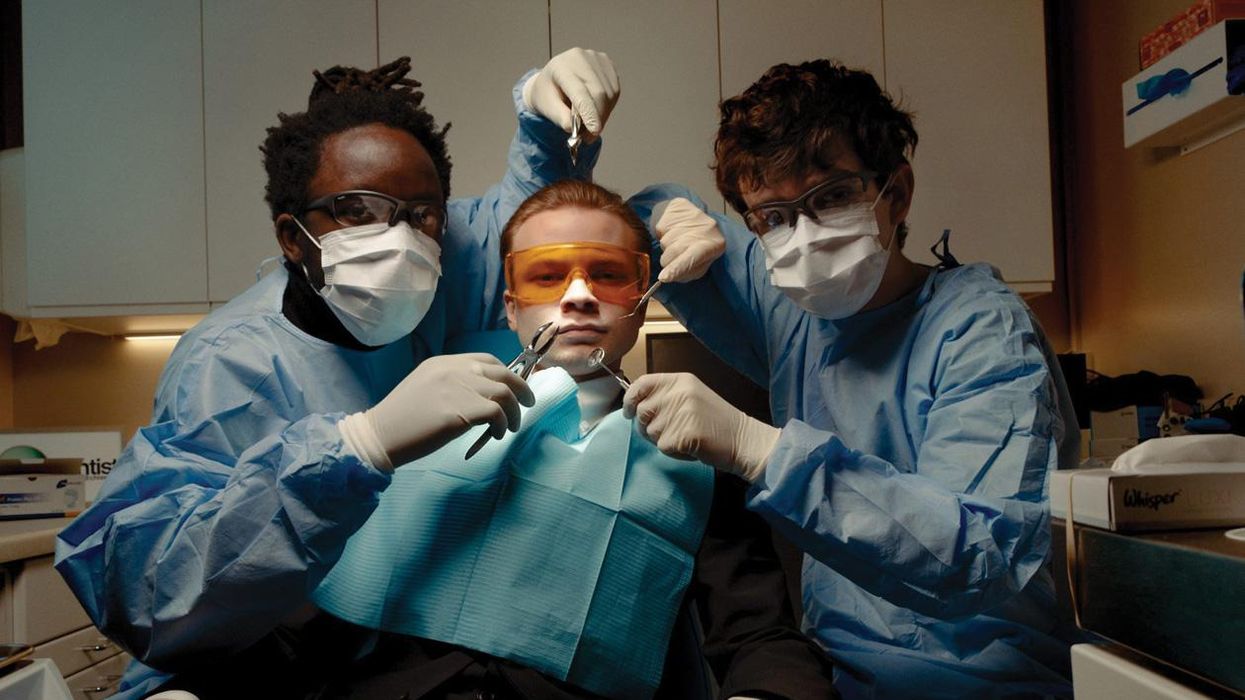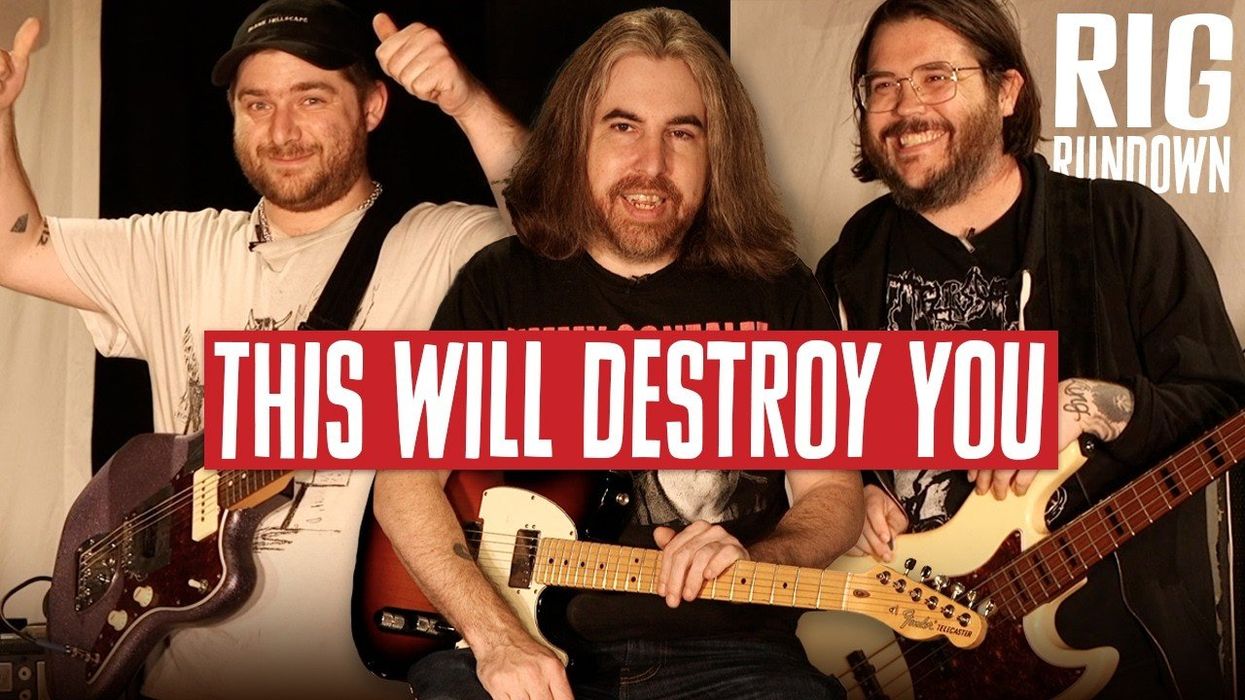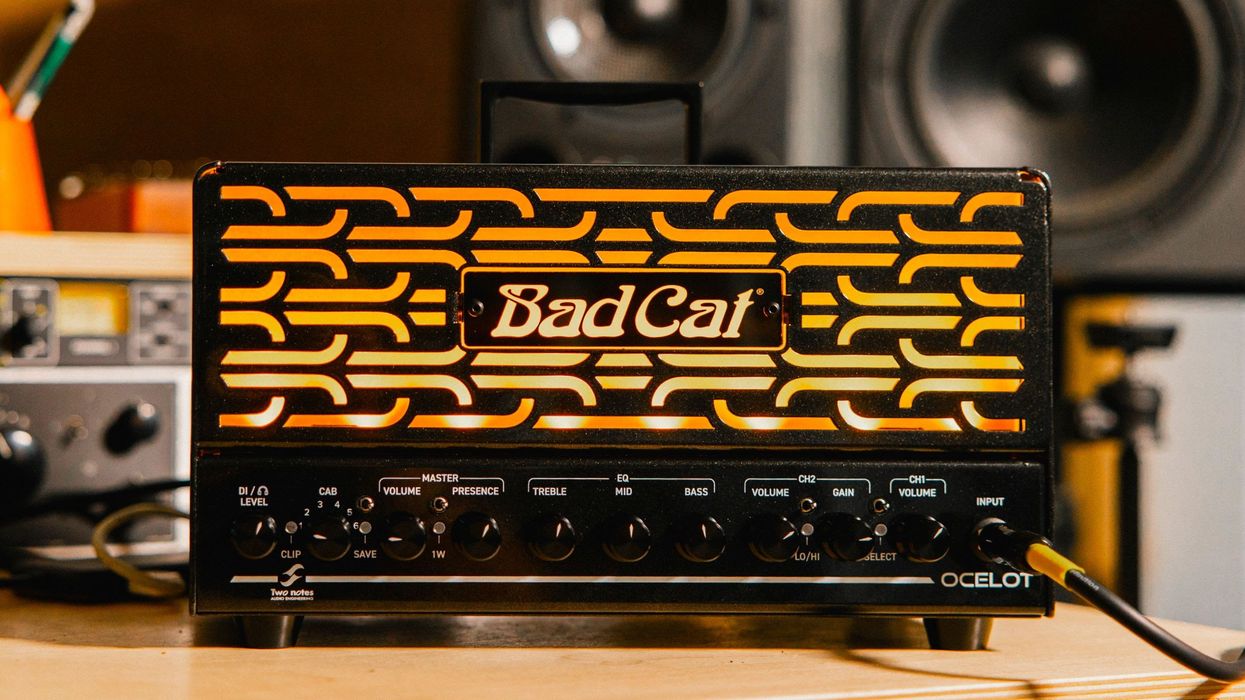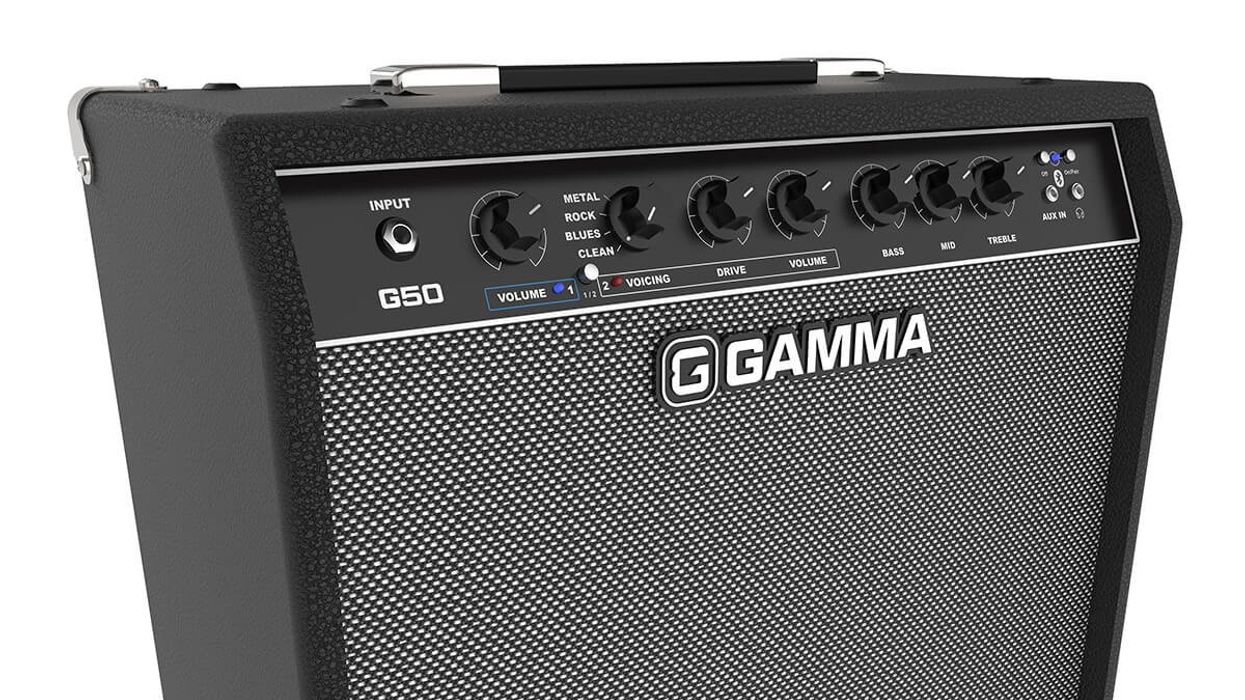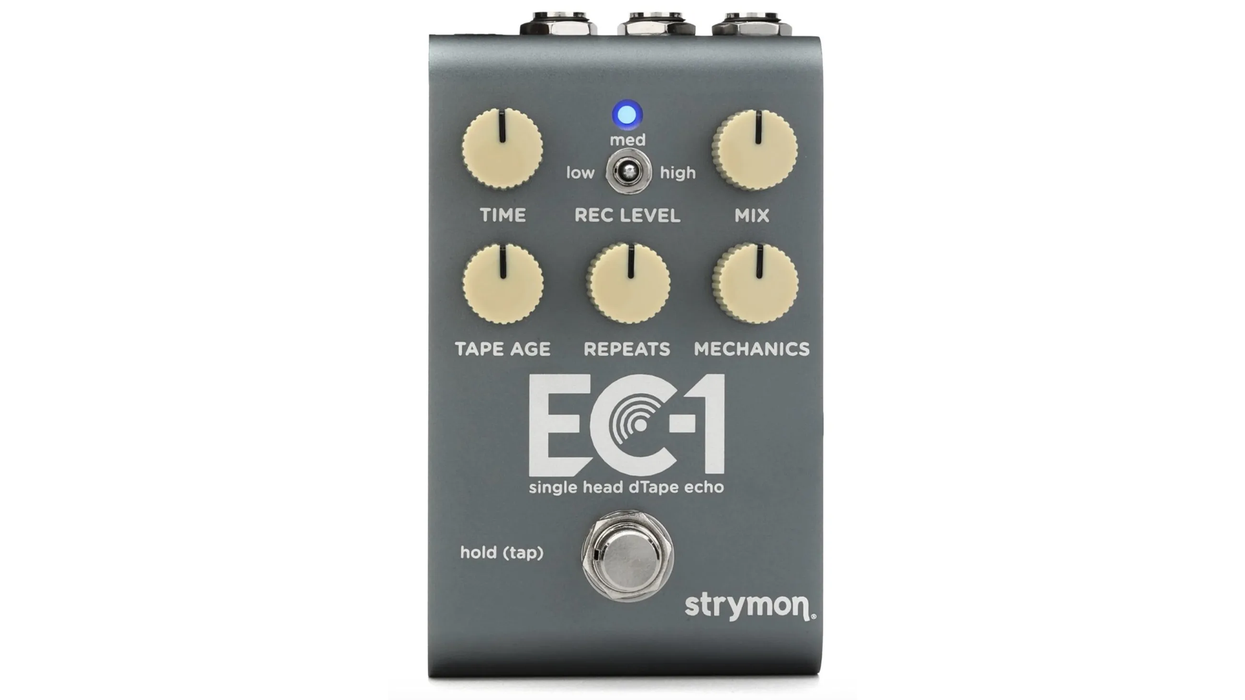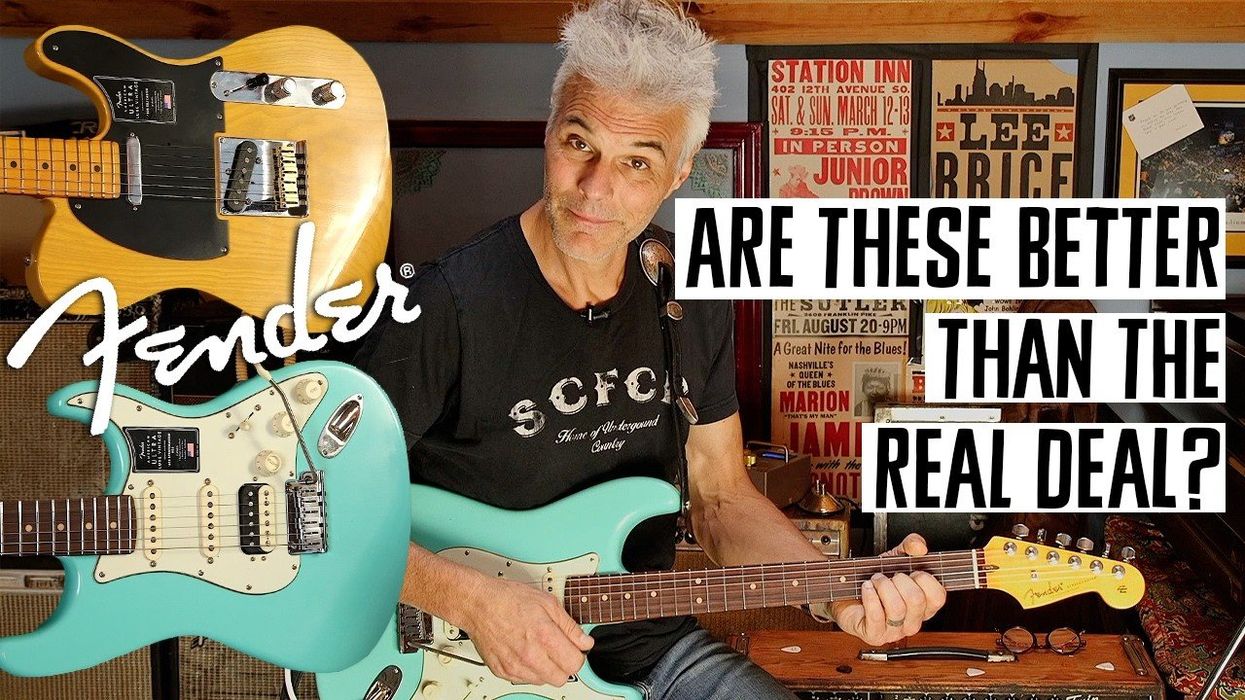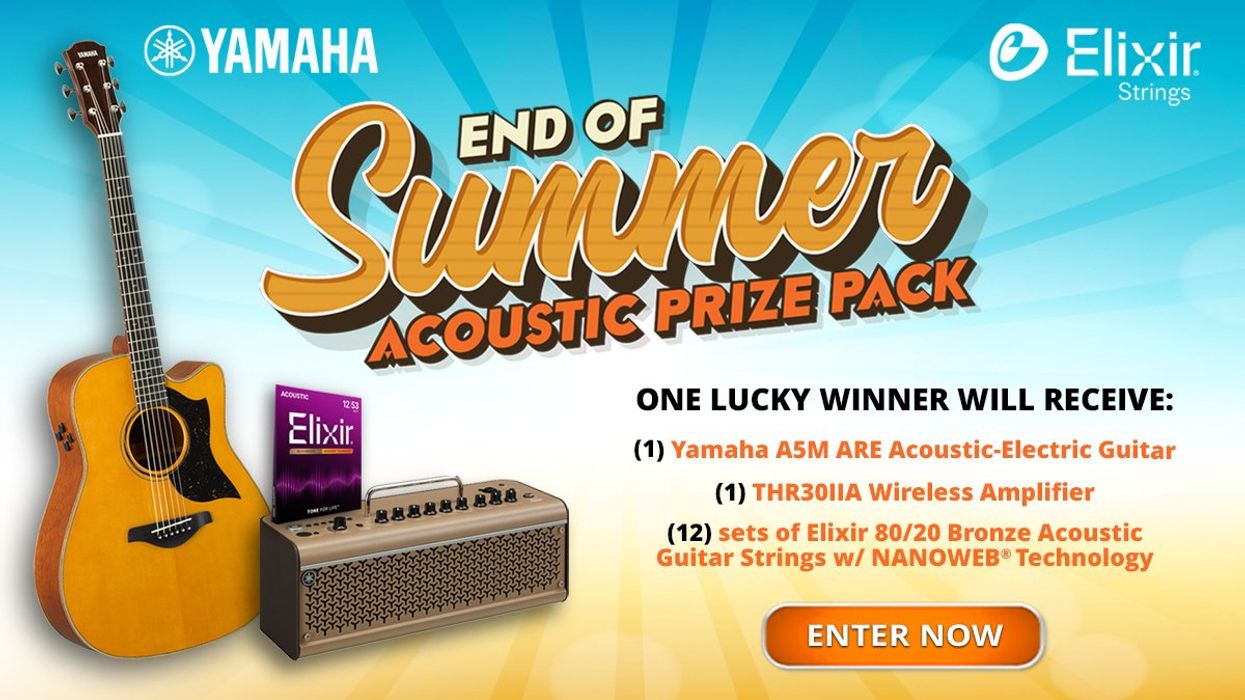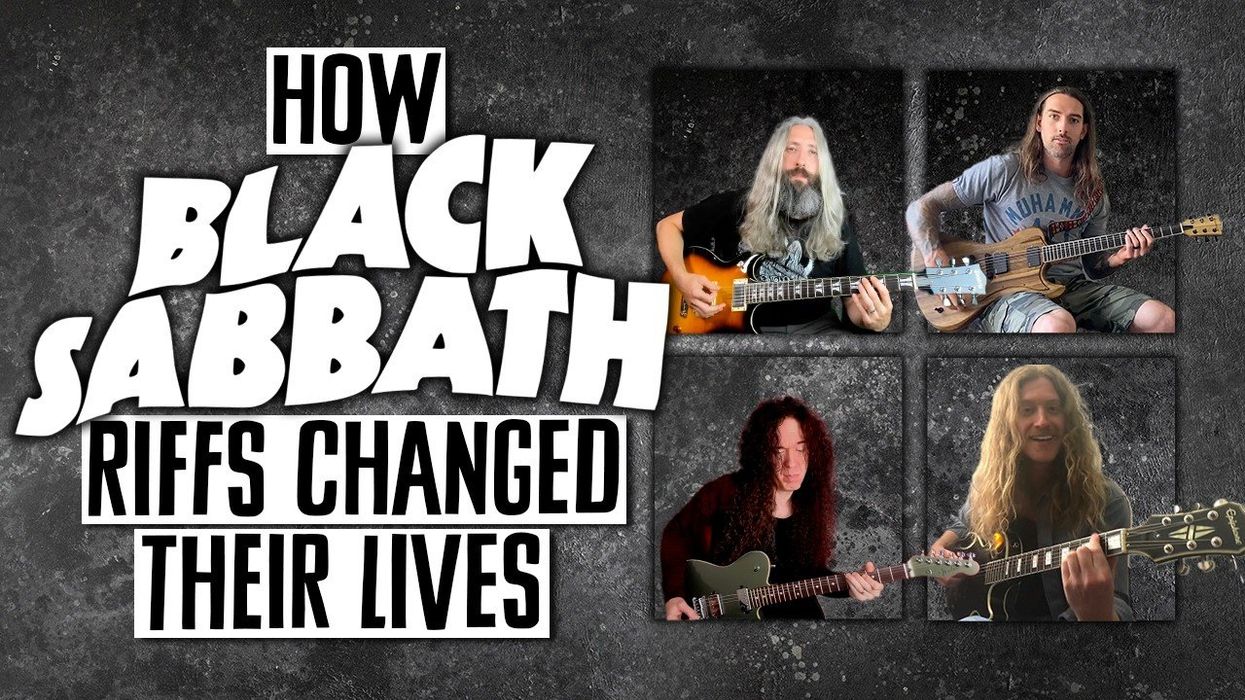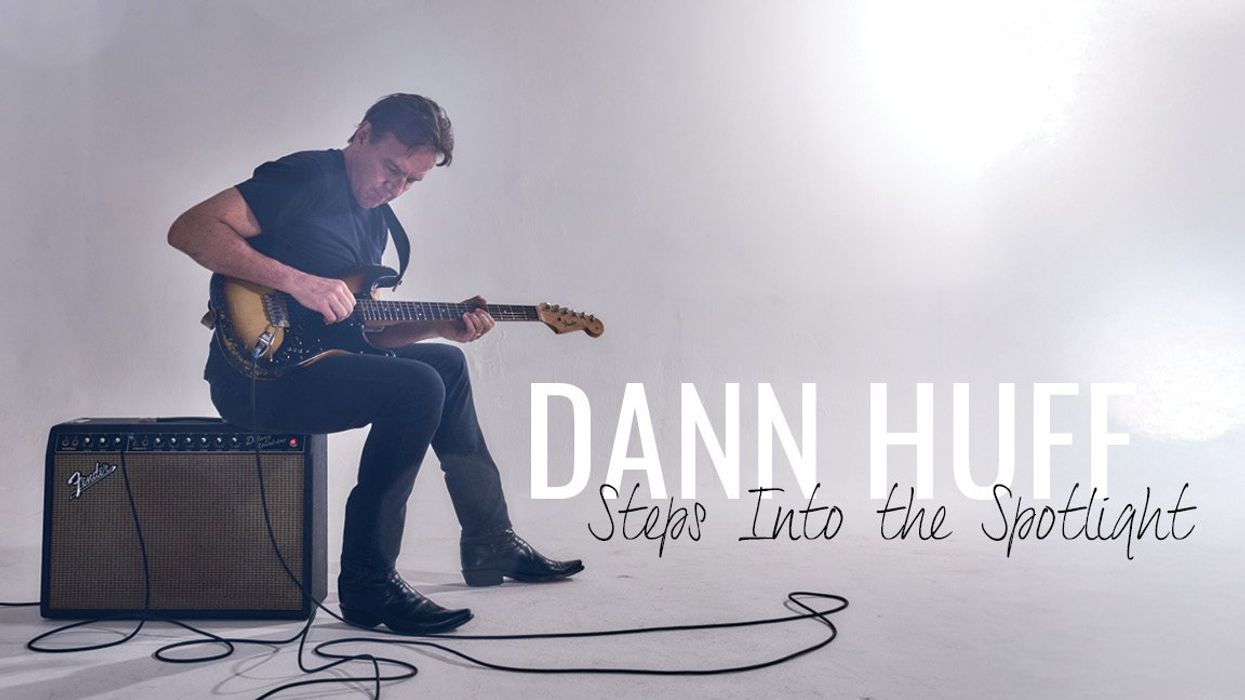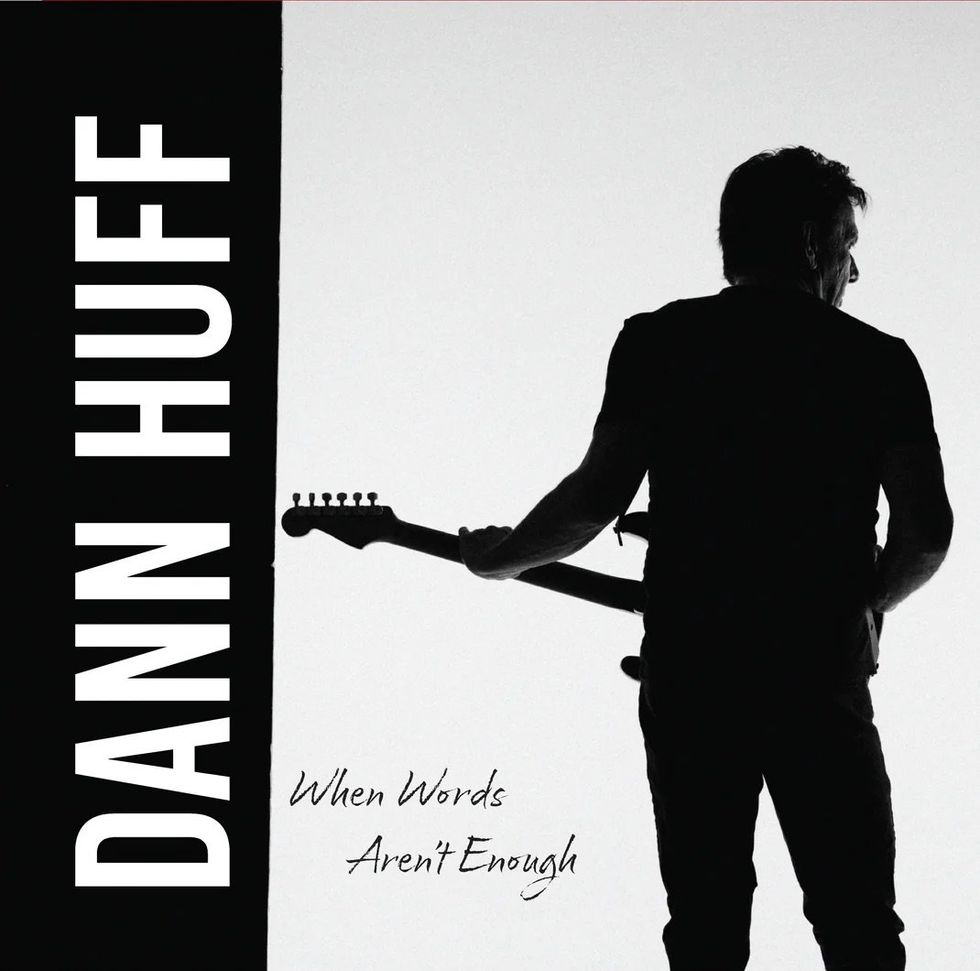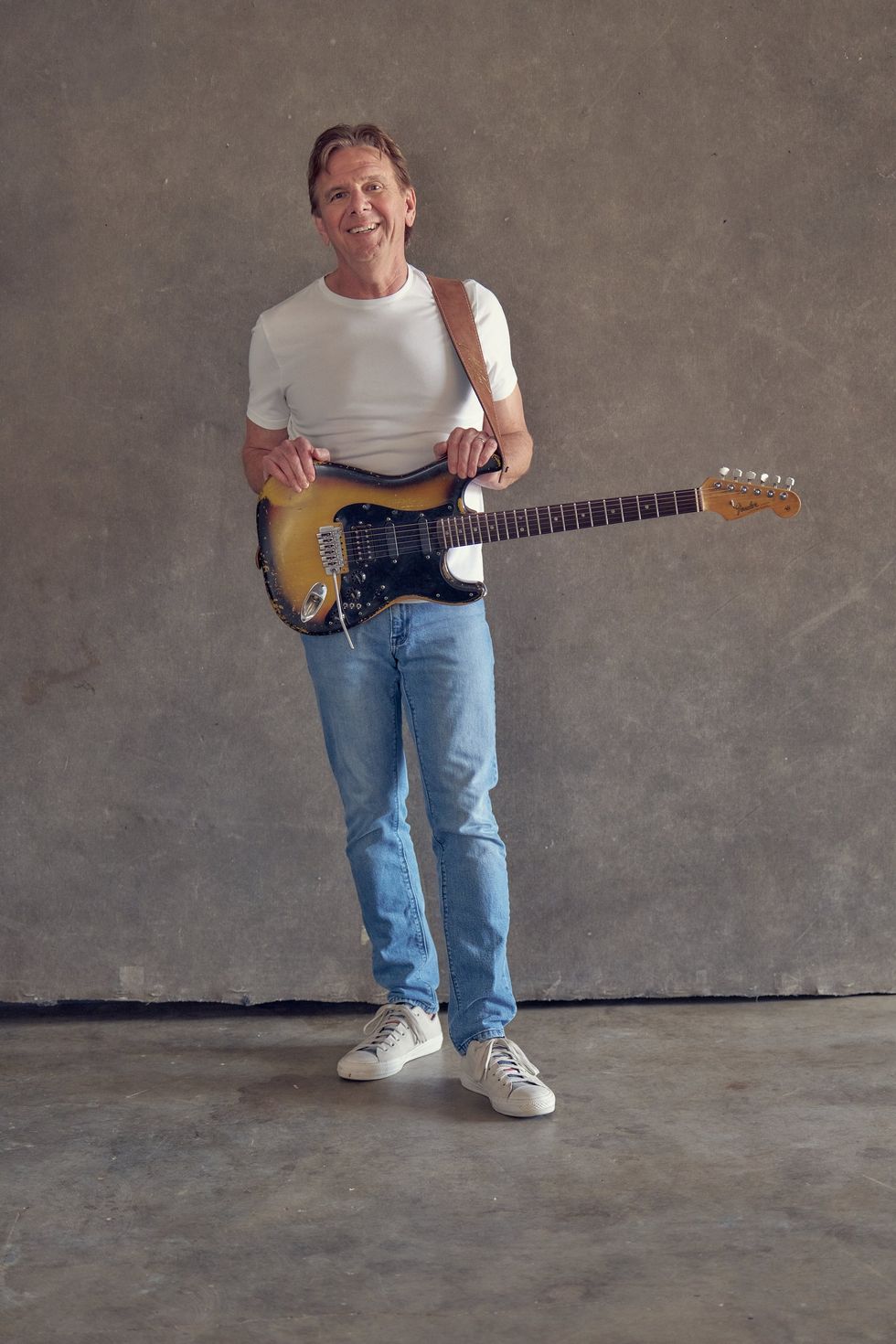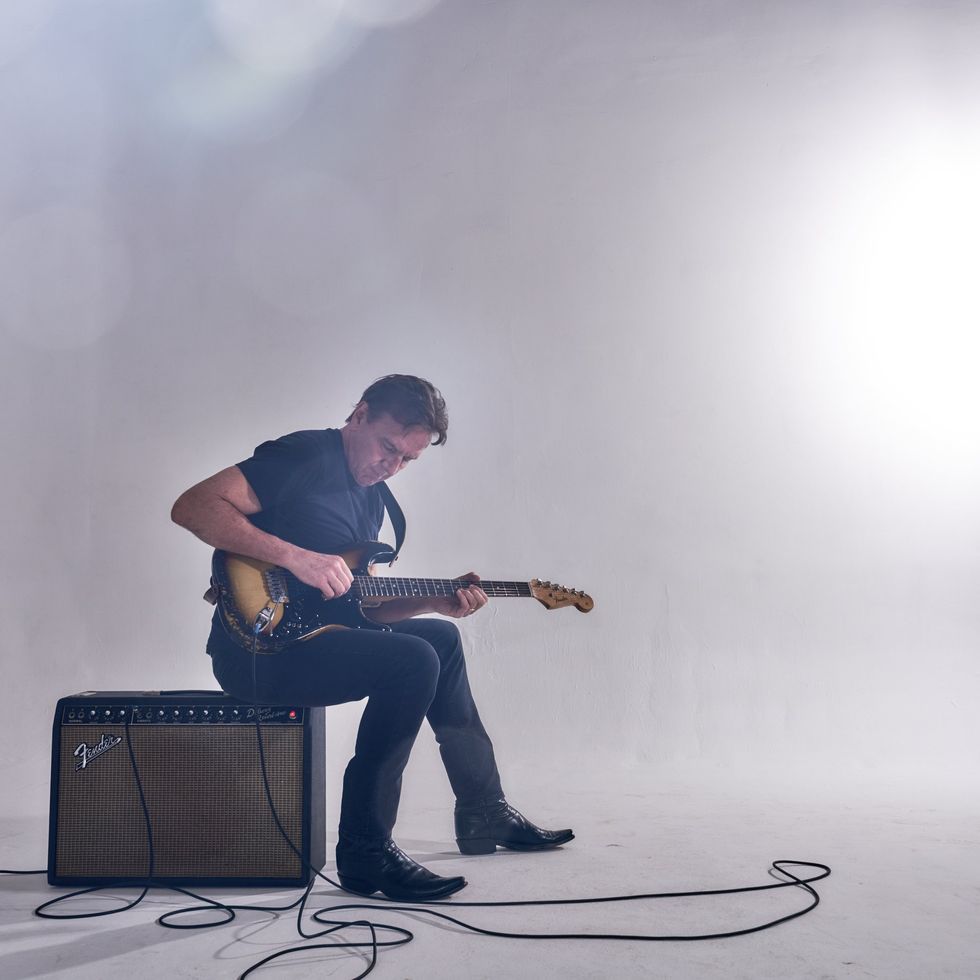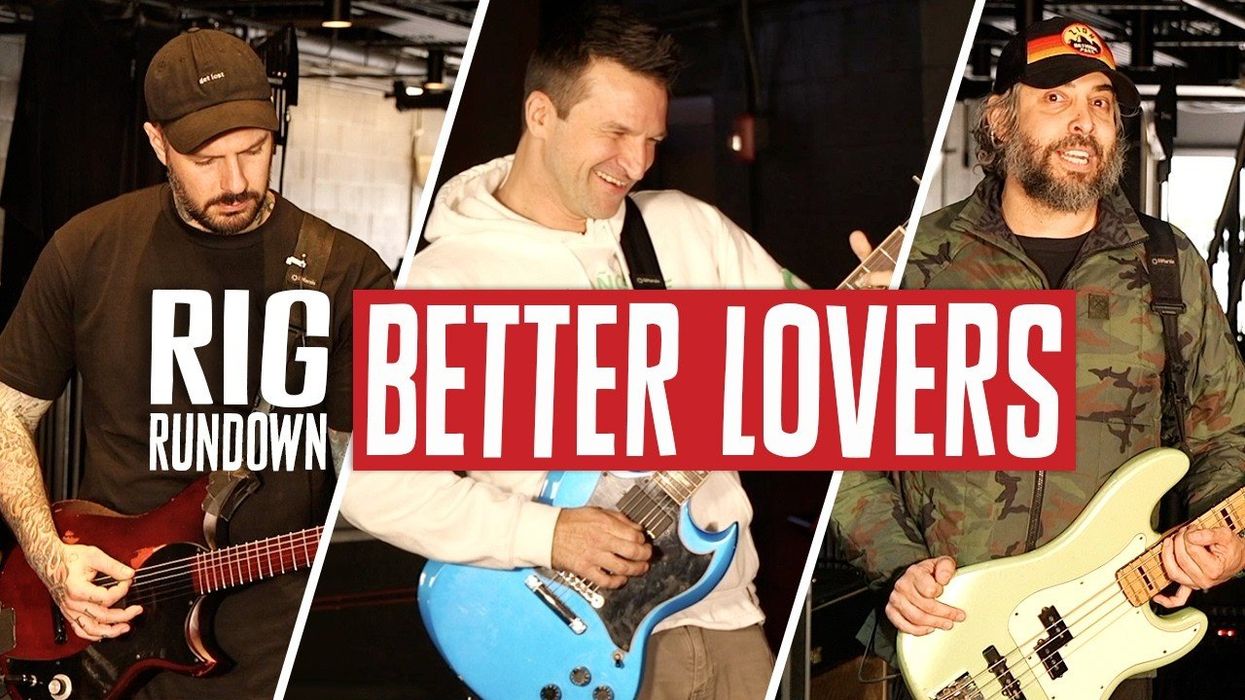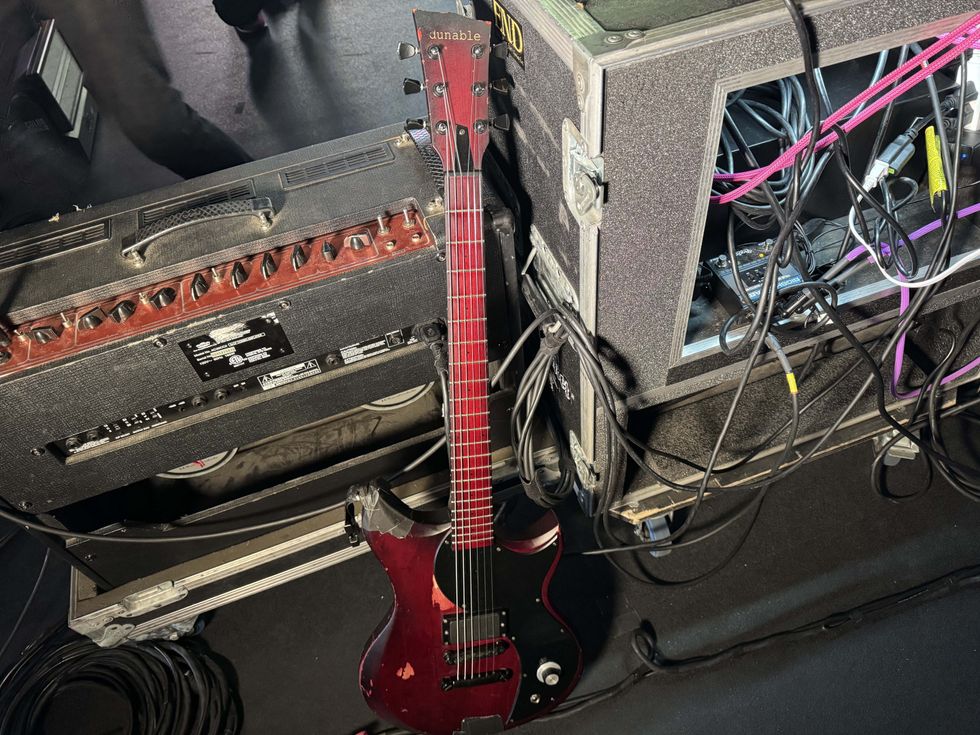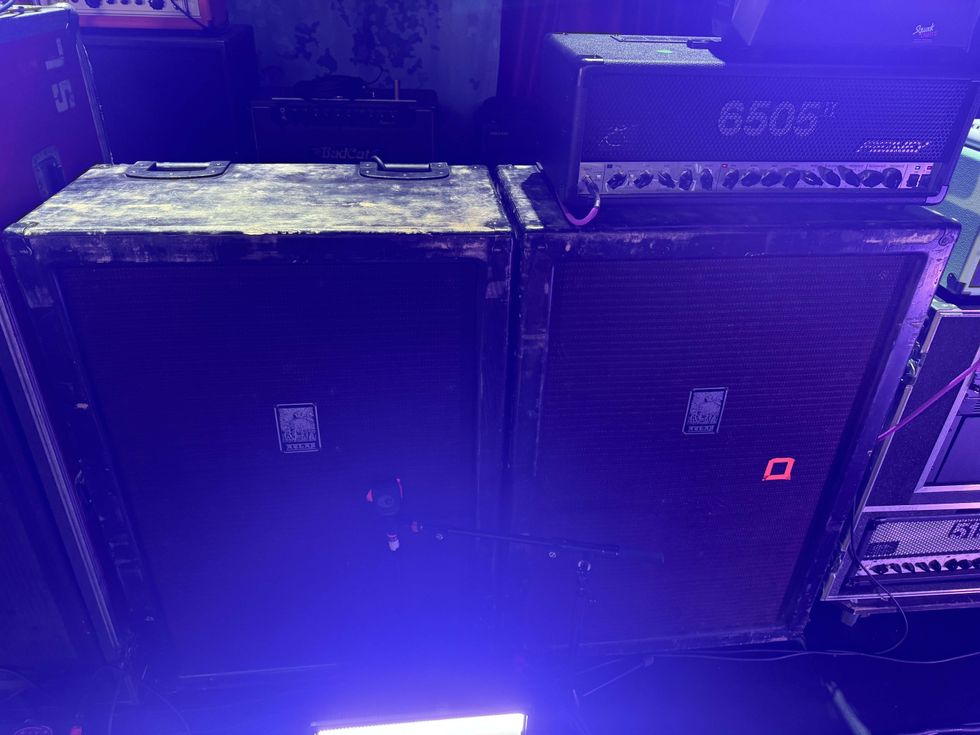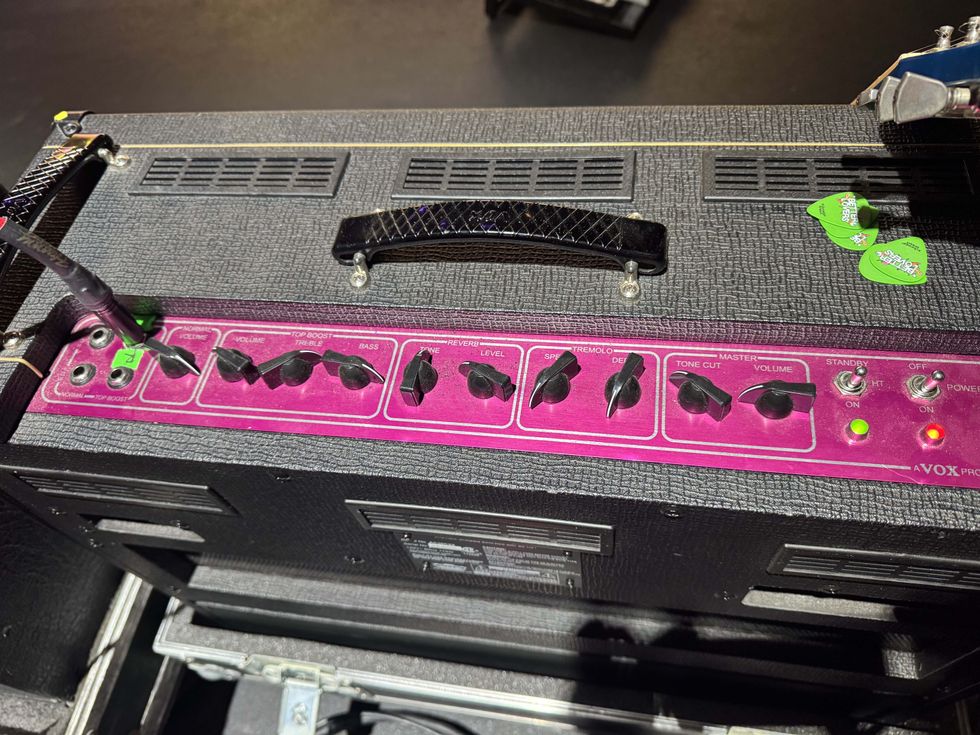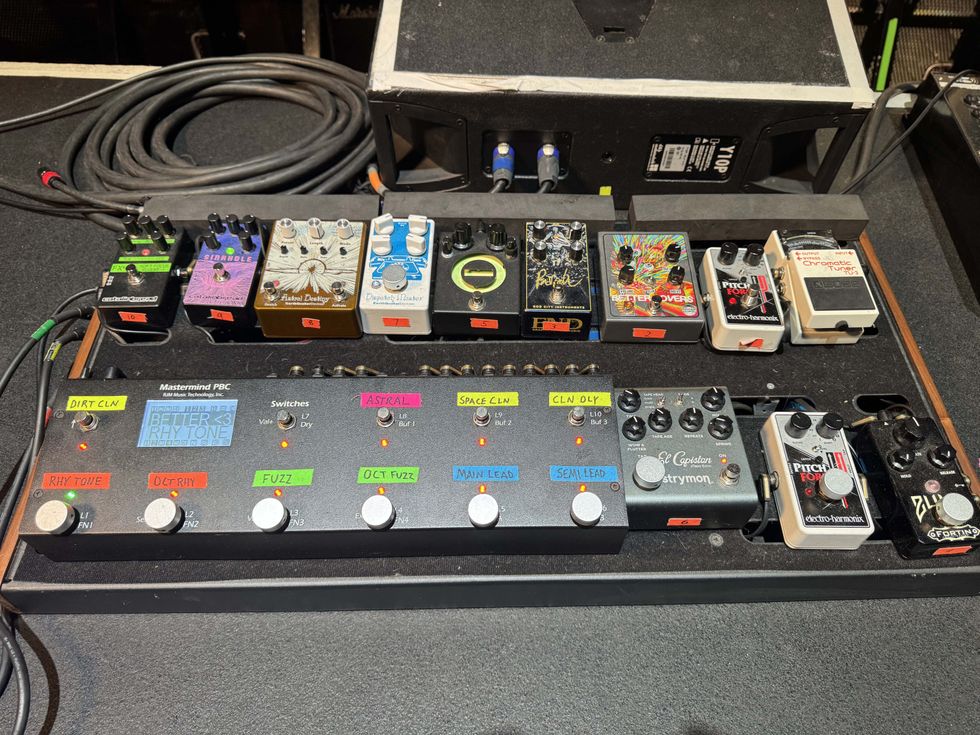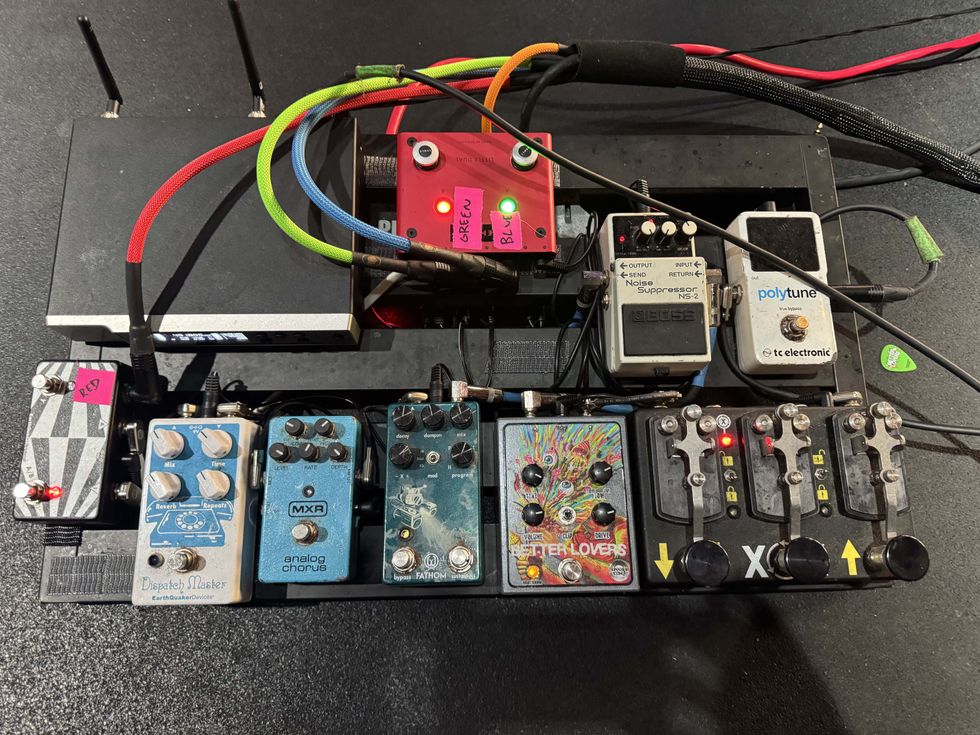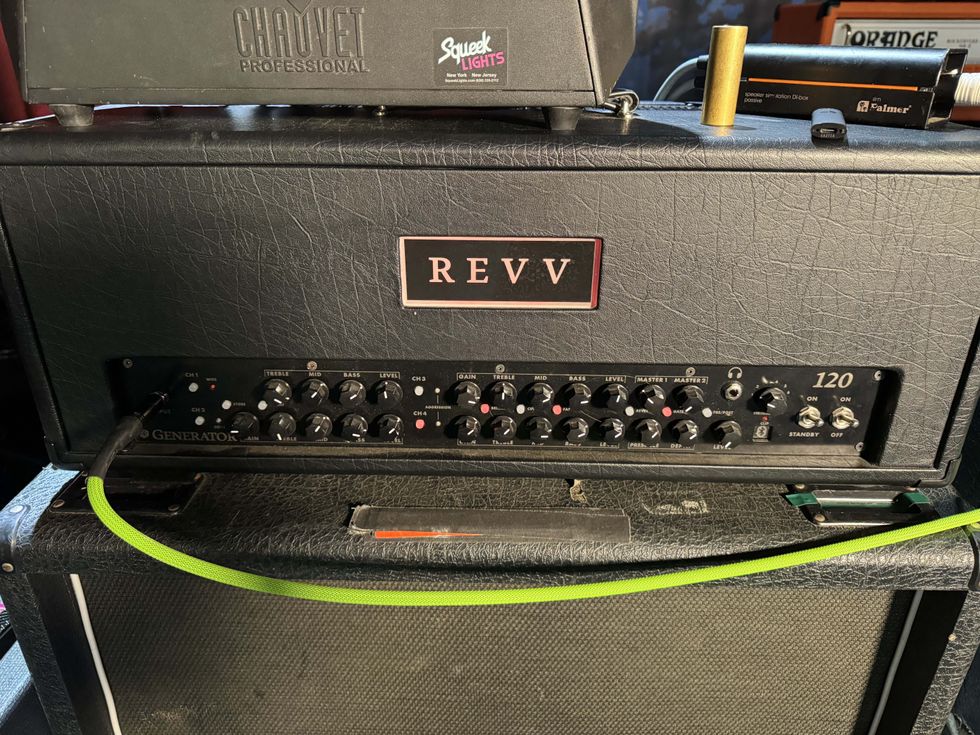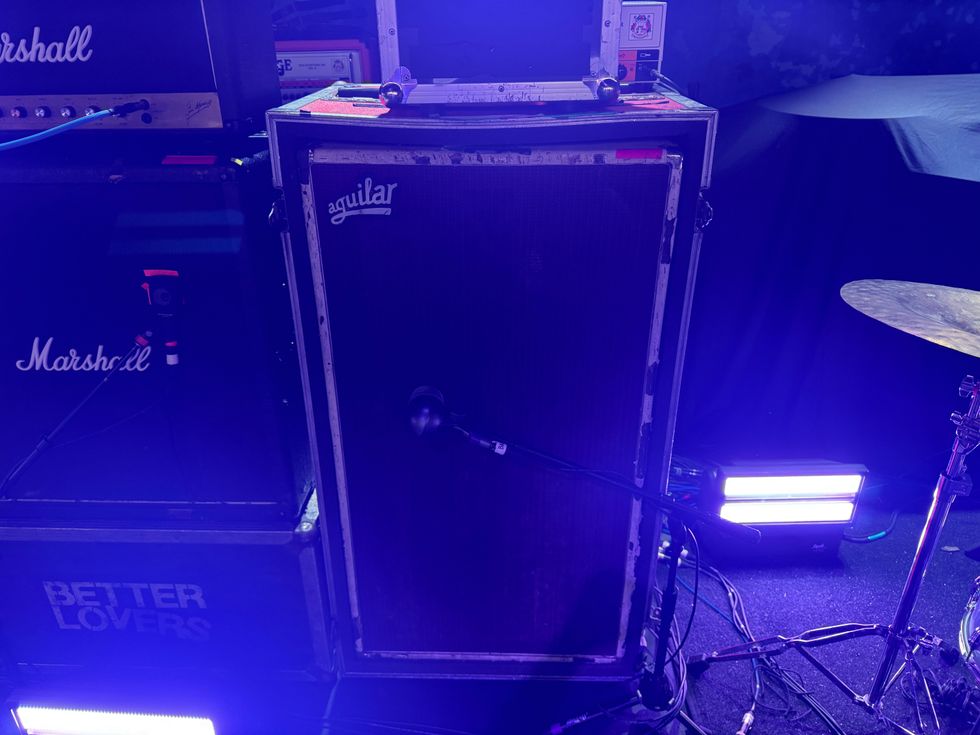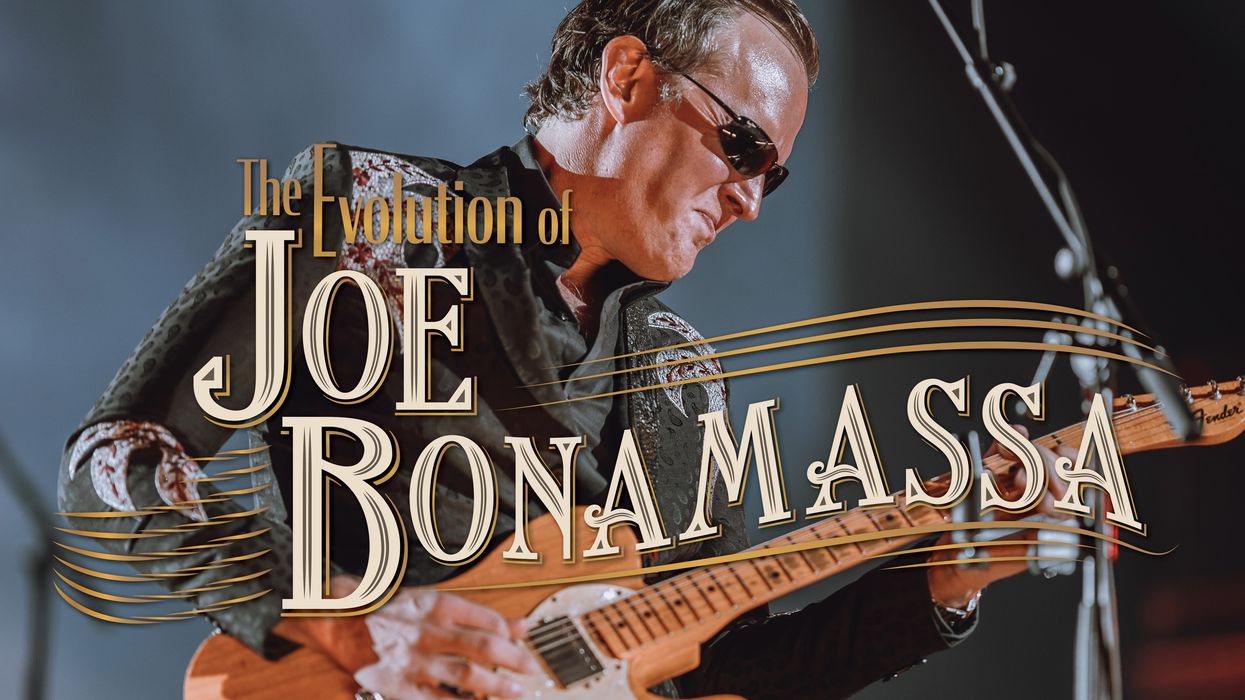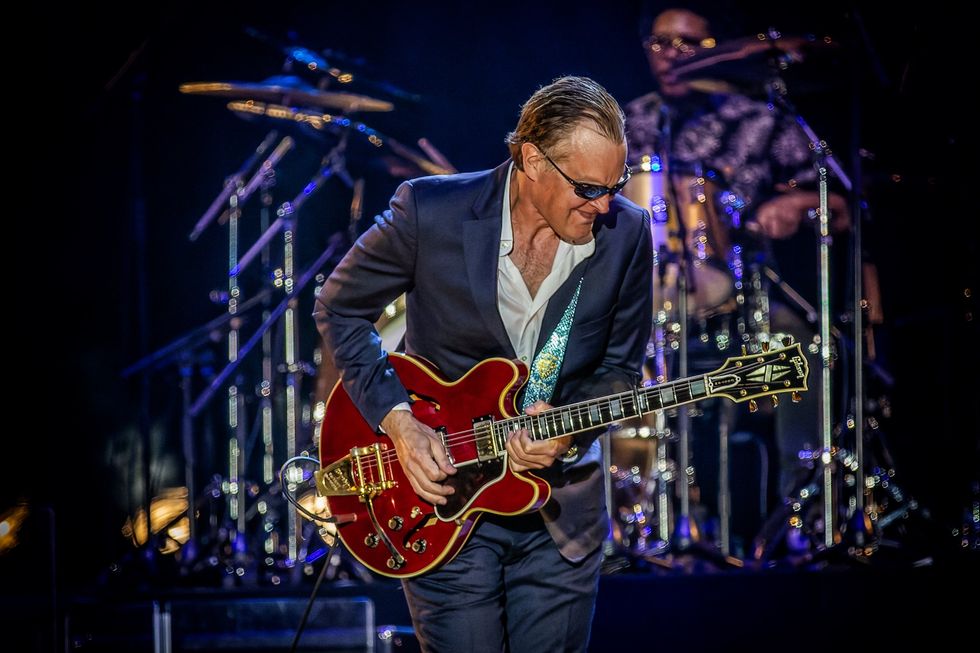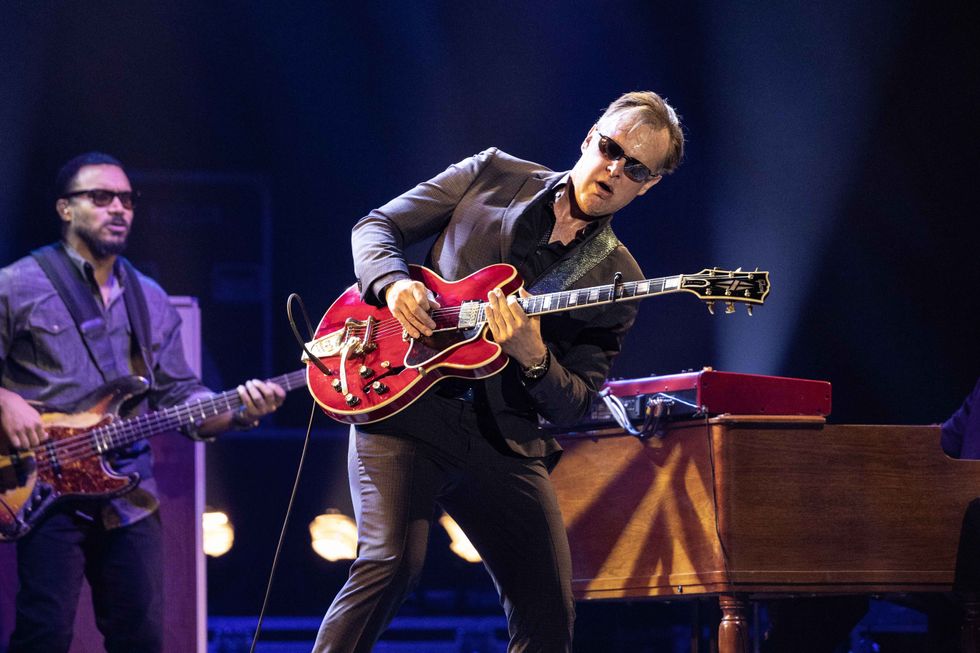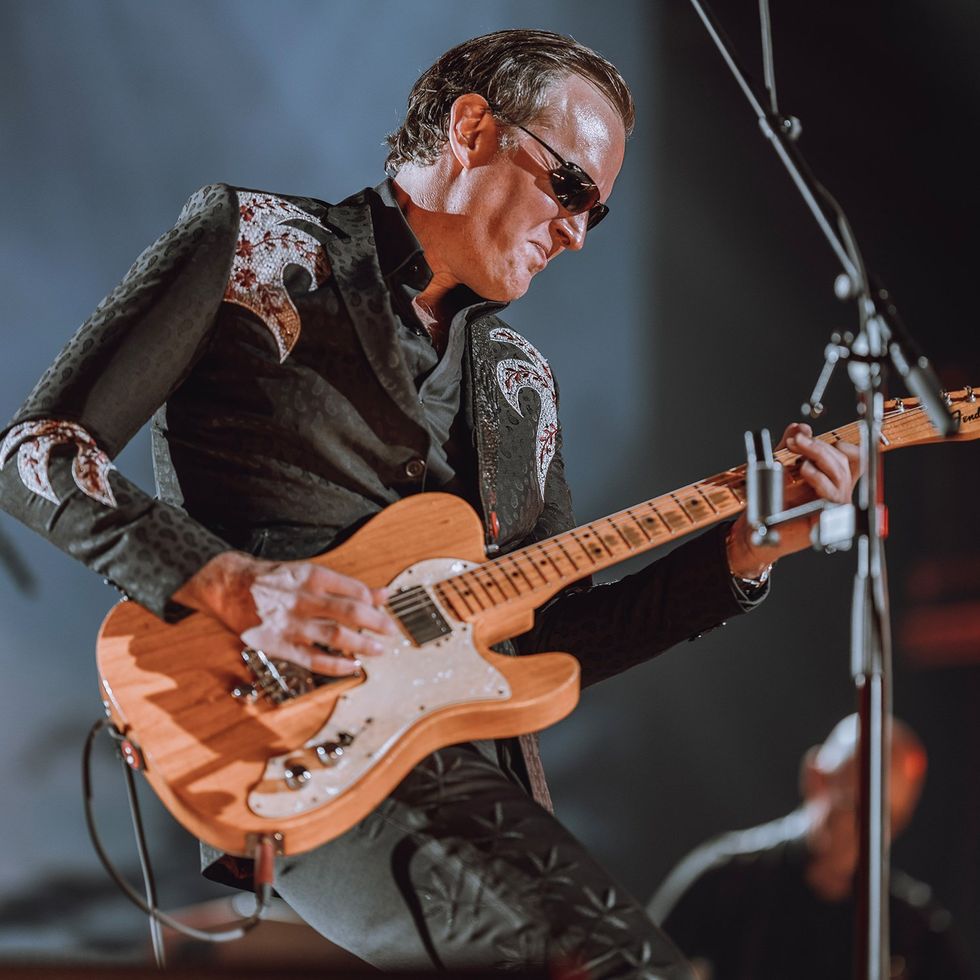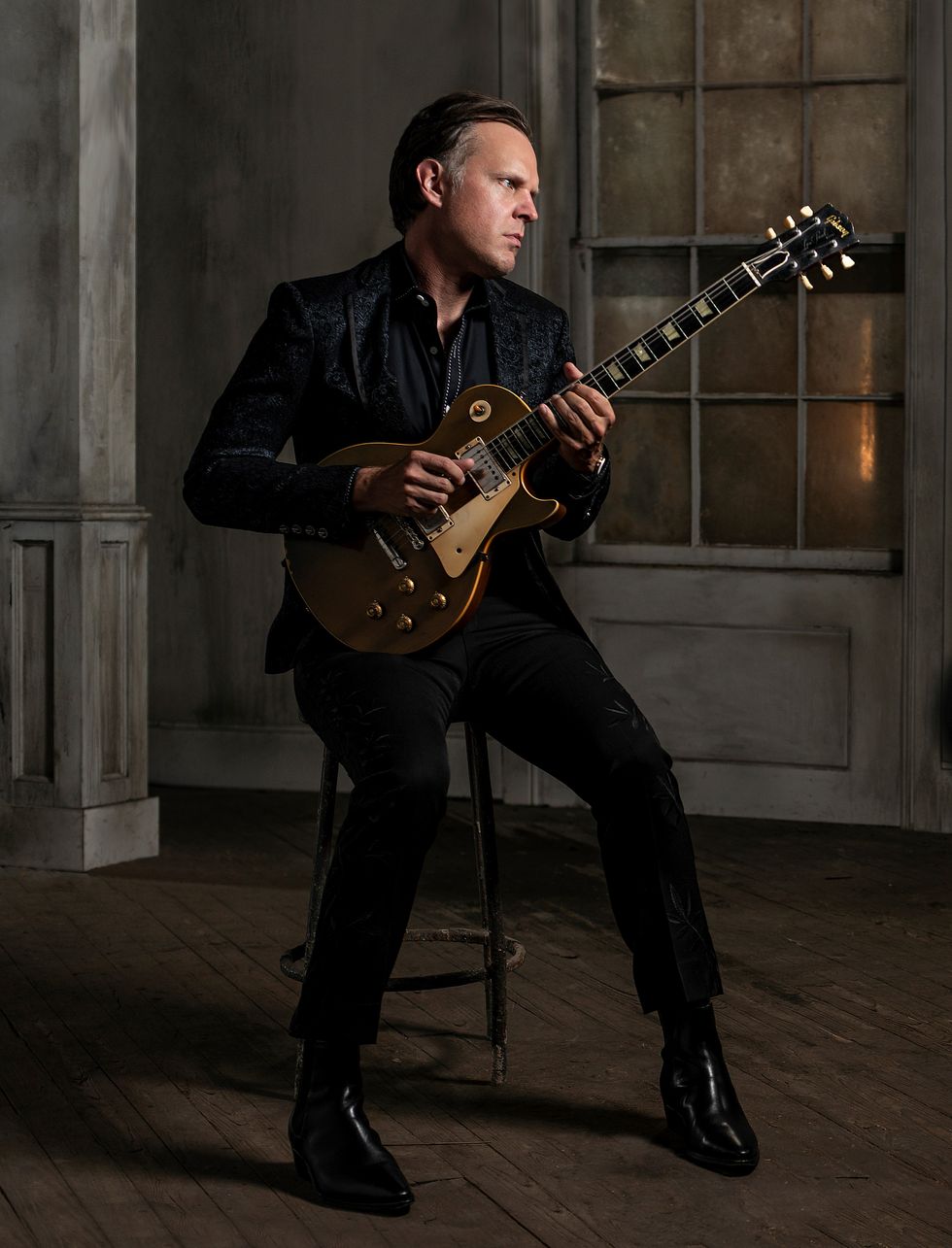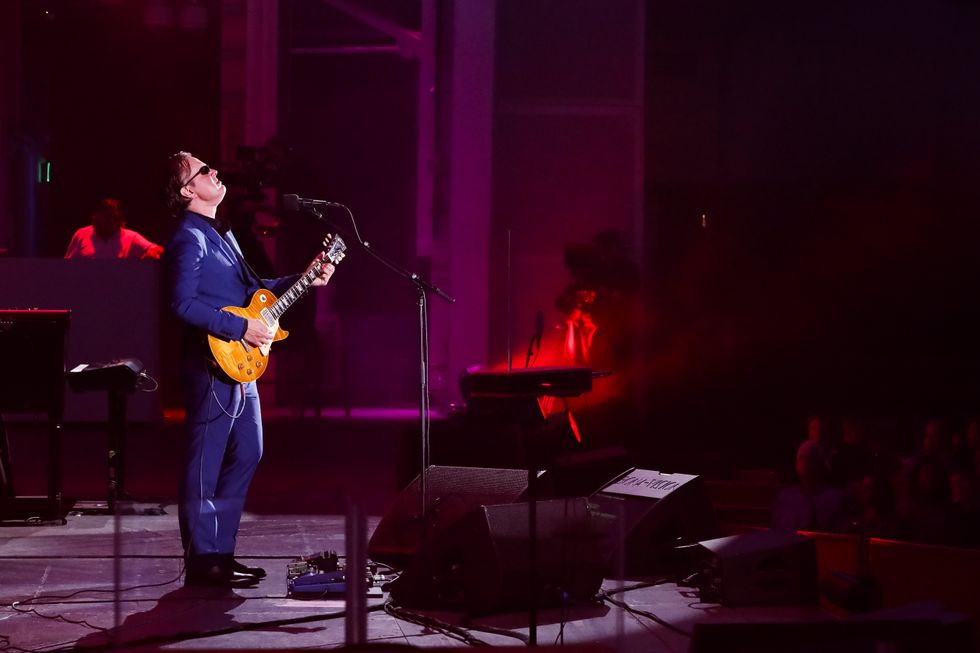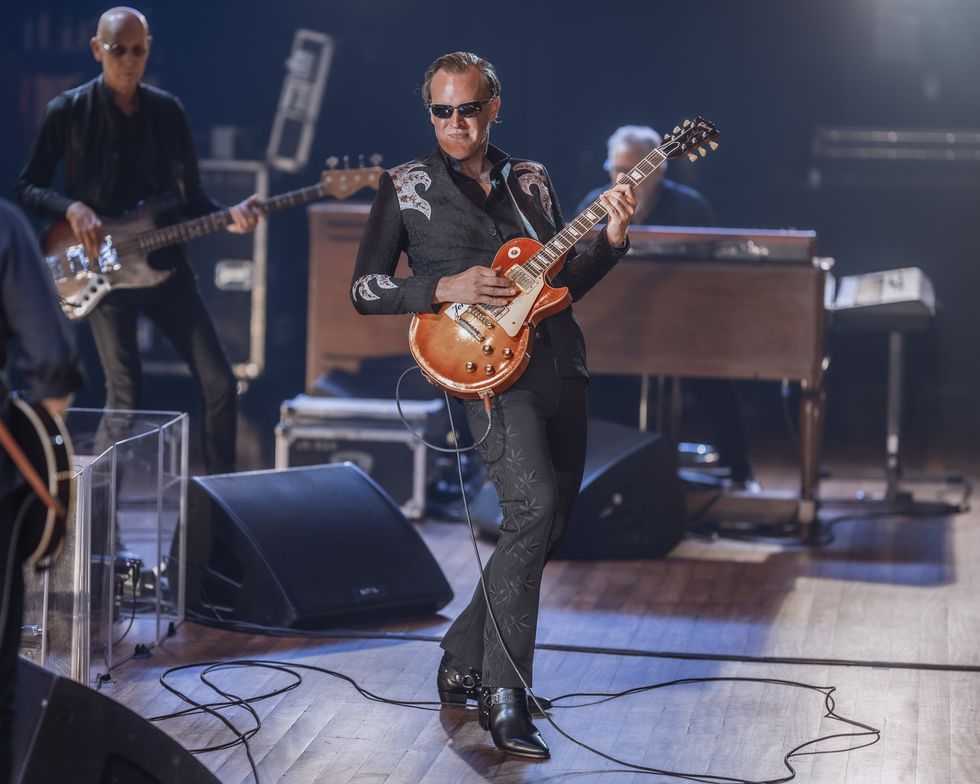“People always want to talk about the red knobs,” says Screaming Females’ frontwoman Marissa Paternoster of her favorite 1970s Sunn Concert Lead head. “It has a really cool cabinet with recessed speakers, and it makes every sound person who looks at it freak out because they don’t know what to do—but all you really have to do is put a microphone in front of it. It’s rad. It’s super loud, and it sounds great.”
Despite preferring to broadcast her cranium-rattling riffs, frazzle-fuzzed licks, and incisively clean chord work via the notoriously loud Sunn and a couple of go-to G&L S-500 solidbodies, Paternoster is no picky gear junkie. Likewise, though she boasts formidable chops born of countless hours of gigging (and jamming to Nirvana, Pixies, and Bikini Kill records as a teen), Paternoster’s also no fan of shredding—at least not in the context most guitarists view the term in. “I kind of hate that stuff,” she says of run-of-the-mill guitar gymnastics. “It sounds like a robot is playing the guitar.”
What does do it for Paternoster and Screaming Females bassist “King” Mike Abbate is anything that dovetails with the New Jersey natives’ punk roots, DIY work ethic, and Paternoster’s distinctive vocals—which can be sweetly demure but are usually delivered with a frenetic, full-throated sneer.
The Females came together in 2005 in New Brunswick, New Jersey, when Paternoster, Abbate, and drummer Jarrett Dougherty were students at Rutgers University—although Abbate admits, “I only went to Rutgers because Marissa and Jarrett were already going there and I wanted to keep playing in the band.” After honing their sound playing together in basements and punk houses, the trio self-produced their first album, Baby Teeth, in 2006.
the guitar.” —Marissa Paternoster
Since then they’ve released five more LPs and an EP, and toured extensively, opening for iconic bands like Dinosaur Jr. and Garbage. Along the way they’ve collaborated with such studio legends as Steve Albini (Shellac, the Pixies, PJ Harvey), Butch Vig (Nirvana, Sonic Youth), and Matt Bayles (Mastodon). Their 2015 release, Rose Mountain, was included on many year-end best-of lists.
We recently spoke with Paternoster about her musical heroes, her one experience with formal music training—a university course she describes as being more like math—and the transformative powers of punk.
When did you start playing guitar?
I started playing when I was 14-ish. I’m 29 now, so I’ve been playing for a while. My dad had a guitar. I started listening to rock ’n’ roll and he suggested that he might be able to teach me some of the Nirvana songs that I’d been listening to—“They’re really easy.” He did, and I just took it from there.
Who else were you listening to?
When I first started listening to rock music, it was Nirvana and Pearl Jam. I really liked the Pixies all throughout high school. Once I got into the Pixies, I started listening to pretty much everything Kill Rock Stars [indie label that first signed Bikini Kill] had ever put out. That led me to K Records [Beck, Modest Mouse], 5RC [5 Rue Christine, a dormant subsidiary of Kill Rock Stars], a lot of riot grrrl music, early contemporary feminist music like queercore, and all kinds of twee stuff. I got into weirder music as I grew older, but at first I was listening to mainstream radio rock, like Smashing Pumpkins and stuff.
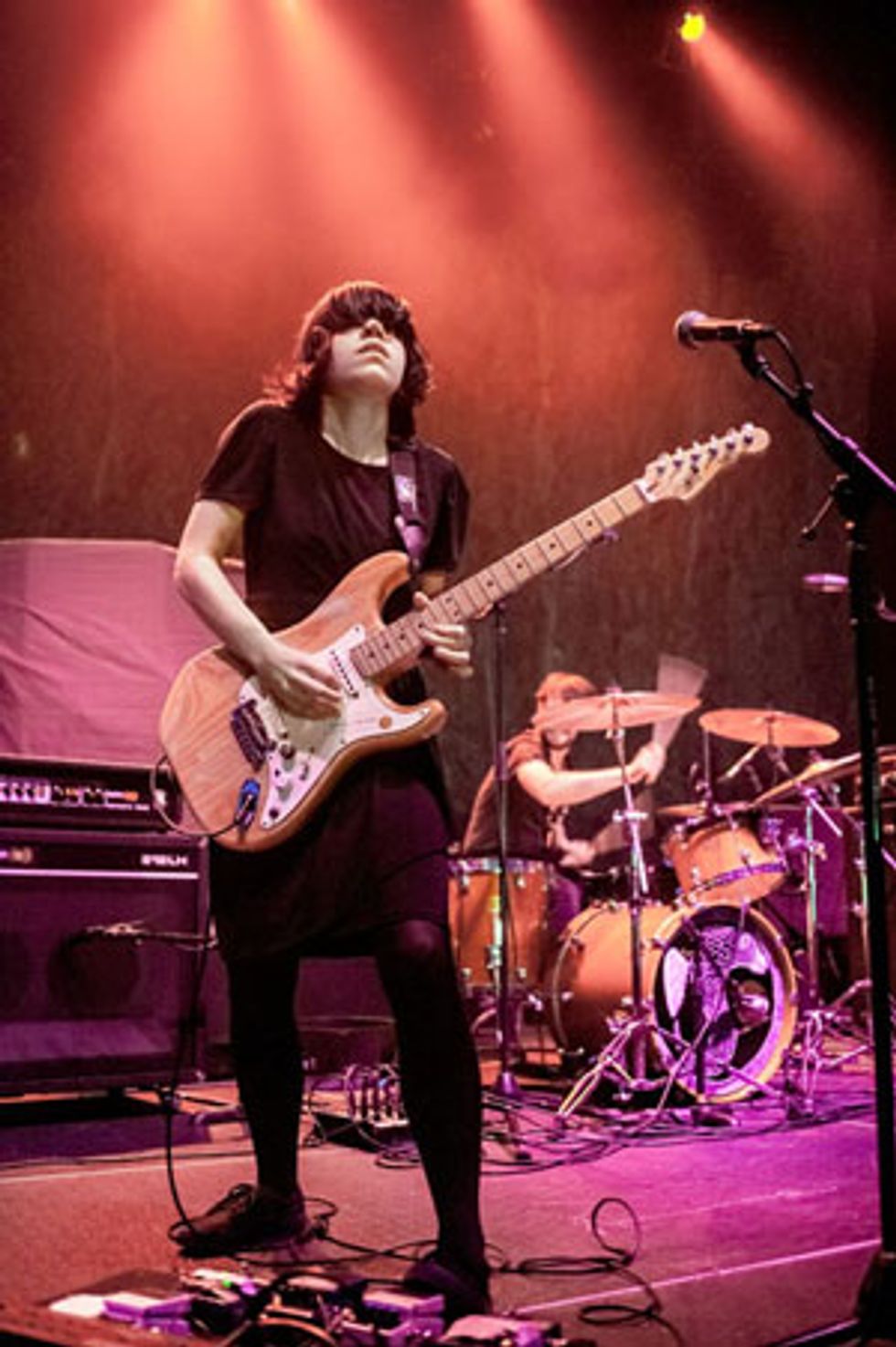
“Mike and I are loud as fuck,” says Screaming Females frontwoman Marissa Paternoster. “We are a very loud band.” She credits part of the noise to her favored 1970s Sunn Concert Lead head shown behind her to the left. Photo by Lindsey Best
You have formidable chops. Did you take lessons?
No, I’ve never taken a lesson. I took Intro to Music Theory at Rutgers. They had two different classes: One was Intro to Music Theory for people who are practicing musicians, and one was more like a math class for people who aren’t practicing musicians. I took the one that was like a math class. I was also a totally lazy, piece-of-crap student, because all I cared about was playing rock music. So I don’t remember any of it. That’s the only [theory] class I’ve ever taken.
Did you spend time learning solos or songs off records?
Before I had people to play with, I would usually just put on CDs that I liked and play around with them while I listened to the song. I went to a Catholic school that didn’t have any kind of arts or music program, but there was a math teacher who had an extracurricular music club. We would meet in the afternoons once a week and jam. He was really into music that I absolutely hated, like Phish and Medeski Martin & Wood, but he was a really good person and cared a lot about the kids who came to music club. That’s how I learned to play my instrument with other people, especially people who had disparate influences, weren’t judgmental, and just wanted to play music with other people because it’s fun. He taught me a lot in that regard.
Did you listen to shredders at all?
No. I kind of hate that stuff—it sounds like a robot is playing the guitar. What really got me into solos was probably the Smashing Pumpkins’ early stuff. Most of the music I grew up on was really just punk music and didn’t have very many solos at all. My favorite band was Bikini Kill, and I can’t even think of a song of theirs that has a guitar solo in it. I really love Neil Young and Crazy Horse. I suppose the first Pearl Jam record has a lot of lengthy solos in it. I wanted to play like that, but it seemed unattainable. Once I started listening to punk, I began to understand that I could be in a band. Up until I started listening to riot grrrl I was like, “This music is for grown men. I can’t do this stuff. Not for me.”
So punk made it accessible?
Yeah. It made it seem like it was something that belonged to me … or could belong to me—or I could be a part of that community. That’s the music that made me really want to play guitar, which is weird, I guess, from a shredding standpoint.
The Screaming Females power trio formed in 2005 at Rutgers University. Its members are, from left to right, bassist “King” Mike Abbate on bass, guitarist/frontwoman Marissa Paternoster, and drummer Jarrett Dougherty. Photo by Lance Bangs
What are the pros and cons of being in a trio and being the only guitarist?
I’ve never known anything else. I’ve only been in one other band—we had a keyboard player, and I was a kid. I hated having to play with a keyboard player. I felt I had no control and I guess, especially back then, I wanted to have a lot of control. Now I’m so used to the setup that we have: Not to sound cheesy, but Mike and I have an unspoken chemistry. I am so comfortable playing along with him. I really can’t imagine what it would be like to have somebody else playing a keyboard or another guitar. I’d probably freak out.
How do you keep the bottom from falling out when you switch from rhythm to lead?
Mike and I are loud as fuck. We are a very loud band. He also sometimes will play bass chords live instead of just playing root notes. If you listen back on albums there’ll be root notes and a rhythm guitar, but live he’ll play some octaves or some chords so that it doesn’t sound like the world fell out from under us when I solo.
composition united.” —Marissa Paternoster
Do you record with the same gear you use live?
We recorded our first album ourselves, so there weren’t many options. I just had my amp and my stuff. Later, I was interning at a studio in New Jersey—it was a barn on the side of the highway—and they had a lot of weird old amps and pedals from the ’80s that flew under the radar. I tried a lot of different fuzz pedals, delay pedals, and amps on that record [Castle Talk].
For our latest record, Rose Mountain, we flew to Seattle to record, so I didn’t have my amplifier. But Matt got me a smaller Sunn combo and a Fender Twin that I could use. There weren’t a ton of options. I think it’s better to know what you like, find a really good-sounding version of it, and have it available to you. That way, you’re not endlessly scrolling through this vast sea of options. You have what you know, you depend on it, and you can pick and choose from that little pool.
Meaning you have a handful of go-to sounds you choose from, depending on the song?
Yeah. I like trying new things and experimenting with sounds, but I’m very trepidatious about adding too much or indulging too much. I try to do what the song might demand instead of doing what I want all the time. I would love to put a million guitars on every song, but it just doesn’t make sense. It’s a little too self-indulgent, I think.
Marissa Paternoster’s Gear
GuitarsG&L S-500 w/ Seymour Duncan Hot Rails bridge pickup
G&L S-500 (stock)
Fender Telecaster
Amps
’70s Sunn Concert Lead head
Sunn 212LH cab
Effects
TSVG Hard Stuff Boost
Earthbound Audio Supercollider
Boss DD-6 Digital Delay
MXR Phase 90
Strings and Picks
GHS Boomers strings (.009–.042)
Dunlop Tortex picks (.88 mm)
Do you like to vary your tones from track to track?
We think of albums as paintings: You want them to have exciting moments or embellishments that really catch your eye, but you also want to be able to step away from it and see the whole composition united. We try to have this sense of continuity so that everything holds together well—like, “We made this album, these songs belong together, and you should listen to it in this order.” But all the while there are going to be little embellishments, much as a painter might add a splash of color in a certain part of a painting. I wouldn’t want to fatigue our listeners by having the same thing happen over and over again, but there has to be sonic continuity or else they’re going to be like, “What the fuck’s going on with this album? Every song is totally different.” There is a place for that, too, but I’m not sure if that’s something I’m interested in doing—right now, at least.
Do you ever experiment with guitars other than your G&Ls?
I have a Fender Telecaster I like using for heavier stuff. The neck pickup sounds super cool in dropped D. But for the most part I just use my G&L S-500s—I don’t think I’ve ever used anything else except for a Tele and the G&Ls.
We’ve been on tour consistently for quite a while now, and playing every night certainly is a great way to push yourself—I definitely feel like I’m getting better at playing guitar. I’m going to spend most of this month working on demos and trying out new pedals to see if I want to keep them in my rig. Other than that, I try to play every day and either record something or write a song. My concern lies a lot more with songwriting than shredding. Even though I do play guitar a lot, it’s not my goal to play fast or do something technically impressive. I like to write songs or write sonic passages that resonate with people emotionally.
YouTube It
Marissa Paternoster’s impeccable vocals and ferocious riffing are the crowning glory in the Screaming Females’ 2013 Record Store Day collaboration with Garbage on the Patti Smith song “Because the Night.”
Females bassist Mike Abbate says Rickenbackers were hard for him to play at first without a thumb rest, but he loved the sound enough to start using a pick. He’s shown here with his 4003 bass. Photo by Farrah Skeiky
Rumbling Male—Screaming Females' "King" Mike Abbate
Screaming Females low-ender “King” Mike Abbate discusses the challenges of keeping up with frontwoman Marissa Paternoster’s riffing, as well as the 28-year-old bassist’s unlikely hero from the 1980s new wave scene.“King” Mike Abbate has known Marissa Paternoster since high school. At the time, he was actually a guitarist, but she inspired him to switch to bass. “I watched Marissa play and thought, ‘If I want to play with this person—who’s just incredible at the guitar—I might as well not play the guitar.’ So I got a cheap bass and started plunking along, trying to learn something different.” Since then Abbate has forged a style that’s powerful, yet melodic and tasteful—and a great fit for a power trio.
Who are some of your bass influences?
Starting out, it was definitely Paul Simonon from the Clash. His stuff was always really fun to play—there was a lot of movement, but at the same time it was also pretty simple. A lot of the patterns he uses are regular ol’ rock ’n’ roll patterns. But Graham Maby, who played bass with Joe Jackson for a bunch of years, is probably my all-time favorite bass player. His playing is absolutely incredible—I can’t imagine ever being as good as he is.
What do you like about his playing?
It is super melodic and super intricate while still staying tasteful. He’s never doing too much but at the same time he totally shreds. I see a lot of bass players who are totally amazing and could play circles around anybody else, but you put them in a band setting and it feels like too much. I feel like Graham could outplay anybody, but he always finds a way to suit the song really nicely. Every once in a while he’ll go nuts—especially if you listen to the live stuff. It’s not often that anyone really likes to hear a bass solo, but he can do it tastefully.
Do you play with a pick, your fingers, or both?
Every once in a while I'll play with my fingers if I want a little bit less attack, but I mostly play with a pick. I started out playing with my fingers, but when we started the band we had this five-hour practice and by the end of it I had a massive blister. I switched to a pick and never stopped using it. My playing and my sound has evolved since then to the point where using a pick just makes the most sense. Plus, when I got a Rickenbacker I found that it was harder for me to play with my fingers, because there was nowhere to rest my thumb. But I liked the sound enough that I didn’t really care—I was down to just use a pick. Plus, a pick looks cooler, man! [Laughs.]
In the studio do you mike your amps or go direct?
We’ve done a little of both. On [2012’s] Ugly, I went through my amp and stuck a mic on it. For Rose Mountain, I didn’t have my setup but I had something close. But I also switched it up—I played through an Ampeg SVT. I also played through a Verellen Meatsmoke, a vintage Acoustic similar to mine, and a Fender Bassman. I also went direct on a couple of things. We tried out a lot of different sounds for the bass, and that’s the first time we ever did anything like that.
What is your sonic role in the band, especially when Marissa takes a solo?
Going back to Graham Maby, I’ve always really liked melodic bass playing. A lot of times I’m still doing my melodic thing and it ends up chaotic with so much stuff going on at once, but I think at certain points it’s what makes our band special. I try not to stray too far away from that. Other times, when I feel it’s getting too cacophonous, I’ll lay back and plunk along on the roots.
“King” Mike Abbate’s Gear
BassesRickenbacker 4003
Peavey T-40 w/ Rickenbacker electronics
Amps
’70s Acoustic 220 head
Acoustic 2x15 cab w/ Peavey Black Widow speakers
Effects
TSVG Hard Stuff Bass Boost
Strings and Picks
GHS Bass Boomers (.045–.105)
Dunlop Tortex picks (.73 mm)
I started playing chords a bunch of years ago, but I’ve recently started trying to get away from that because it tends to sound really muddy. Also, right around when I discovered that I could play chords to fatten up the sound and fill it out, the Dinosaur Jr. comparisons came in. I was like, “I guess I should check out Dinosaur Jr.” But it depends on the song: Sometimes I’ll play a melodic bass line over a guitar solo if it seems like it fits. Other times I’ll play the chords. I recently got an overdrive pedal, and it’s the first time I’ve had a pedal in my setup. On songs where I would normally play chords, lately I’ve been kicking on that pedal and playing the root instead of playing three strings at a time and making it sound muddy.
When you play chords, what chord voicings do you play?
Sometimes power chords, sometimes octaves, and other times the root, third, and seventh. I don’t know much about theory, but sometimes I play other things.
Speaking of Dinosaur Jr., you toured with them a few years ago, right?
Yeah, we’ve done a couple of shows with them. Once we were compared to that band, they became one of my favorite bands for quite a while. I was listening to their stuff all the time, so it was really cool getting to play with them. At the same time, it made me hyperaware that these comparisons were being made, so I tried to stray away from that sound a little bit.
Did you try out Lou [Barlow’s] rig? He uses a ton of amps, just like J [Mascis].
No—I have no desire to play through a rig like that! [Laughs.] That’s just gratuitous. I’m fine with what I play through.


